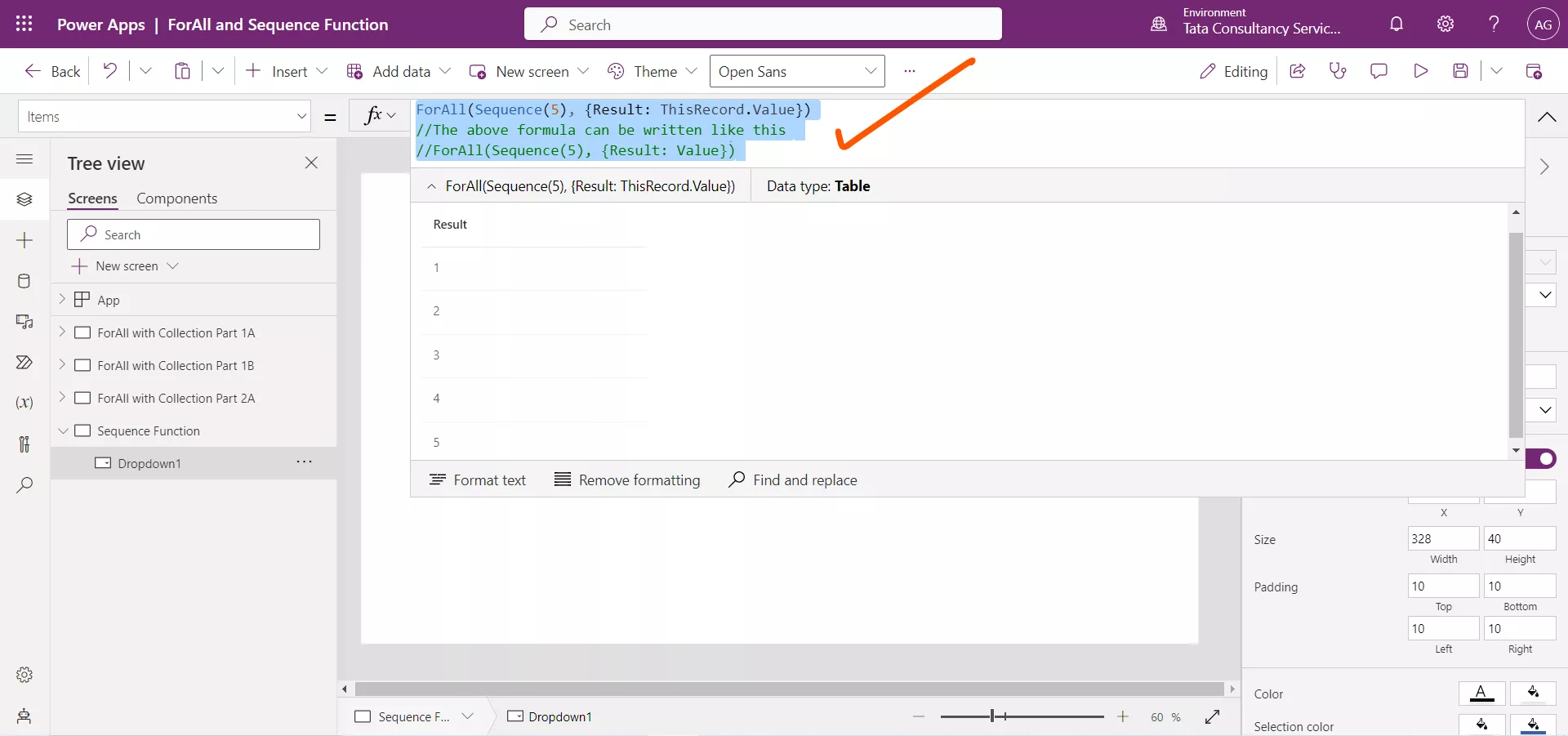ForAll function in Power Apps
The ForAll function evaluates a formula and performs actions for all the records in a table. In this context it works as a for each loop in the power app. The ThisRecord operator is used to refer the current record in the ForAll function in power apps.
Note: The formula returns a table. If the result of the formula is a single value, the resulting table will be a single-column table. If the result of the formula is a blank value, then there is no record in the result table for that input record. In this case, there will be fewer records in the result table than the source table.
Power Apps Syntax ForAll(Any Table, Something that we want to do for each record or item in the table)
Both the parameters of the function are required.
- Any Table - Required. It is a table to be acted upon, (may be a collection or any tabular data source).
- Formula - Required. The formula to evaluate for all records of the Table.
Exercise: The demonstration of ForAll function in a gallery control in Power Apps. A. For All Function with Collection
We can use the ForAll function with the collection datasource in powerapps.
Step 1: In the Power Apps Studio, Select the + Insert tab and add a Button control.
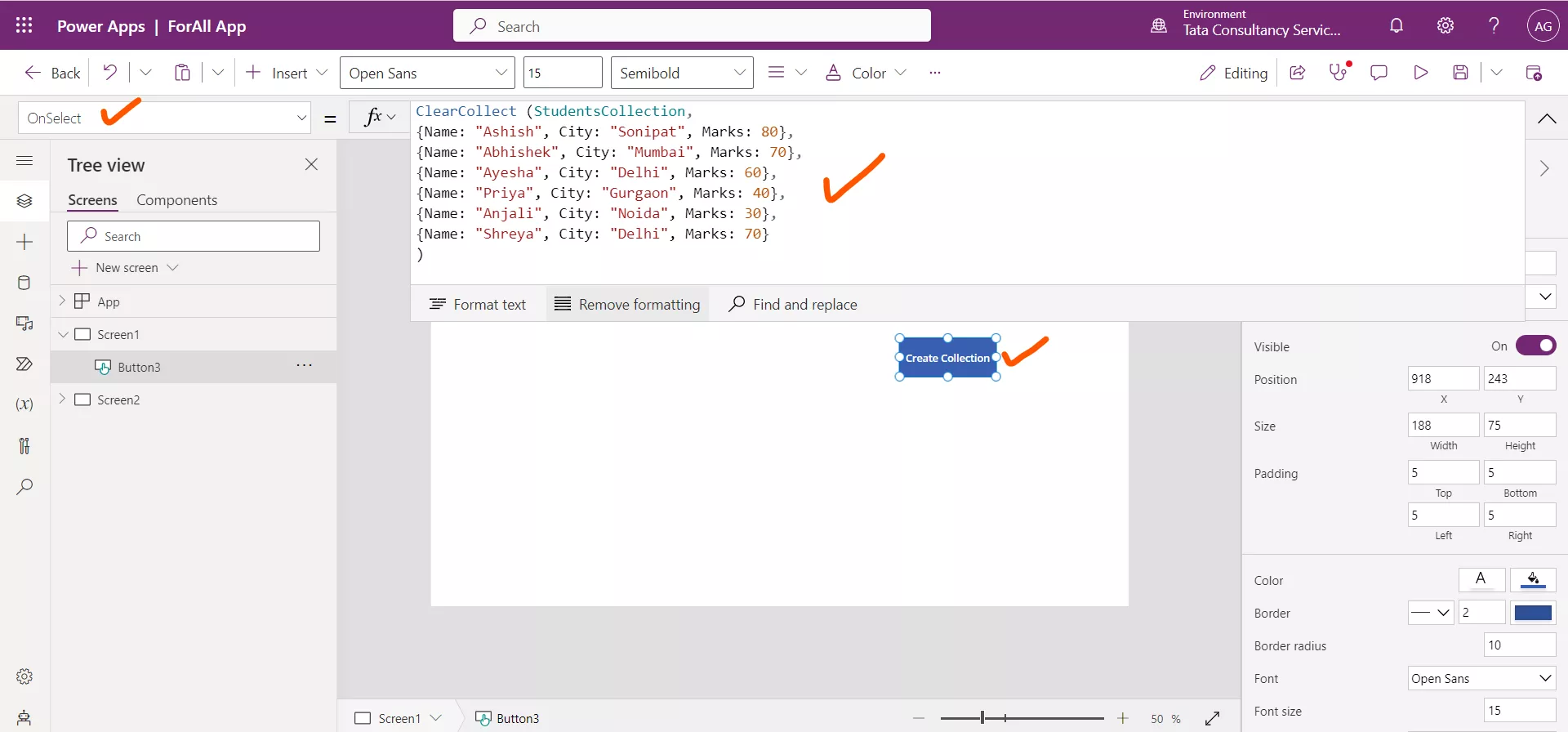
Step 2: Select the Button control, and set its Text property to "Create Collection". And set the OnSelect property to the following powerapps formula.
Power Apps Formula
{Name: "Ashish", City: "Sonipat", Marks: 80},
{Name: "Abhishek", City: "Mumbai", Marks: 70},
{Name: "Ayesha", City: "Delhi", Marks: 60},
{Name: "Priya", City: "Gurgaon", Marks: 40},
{Name: "Anjali", City: "Noida", Marks: 30},
{Name: "Shreya", City: "Delhi", Marks: 70}
)

Step 3: Hold the Alt Key and press the Button control. Add a Gallery control to the screen and choose StudentsCollection from the data source pop-up or set its Items property from the dropdown to StudentsCollection.
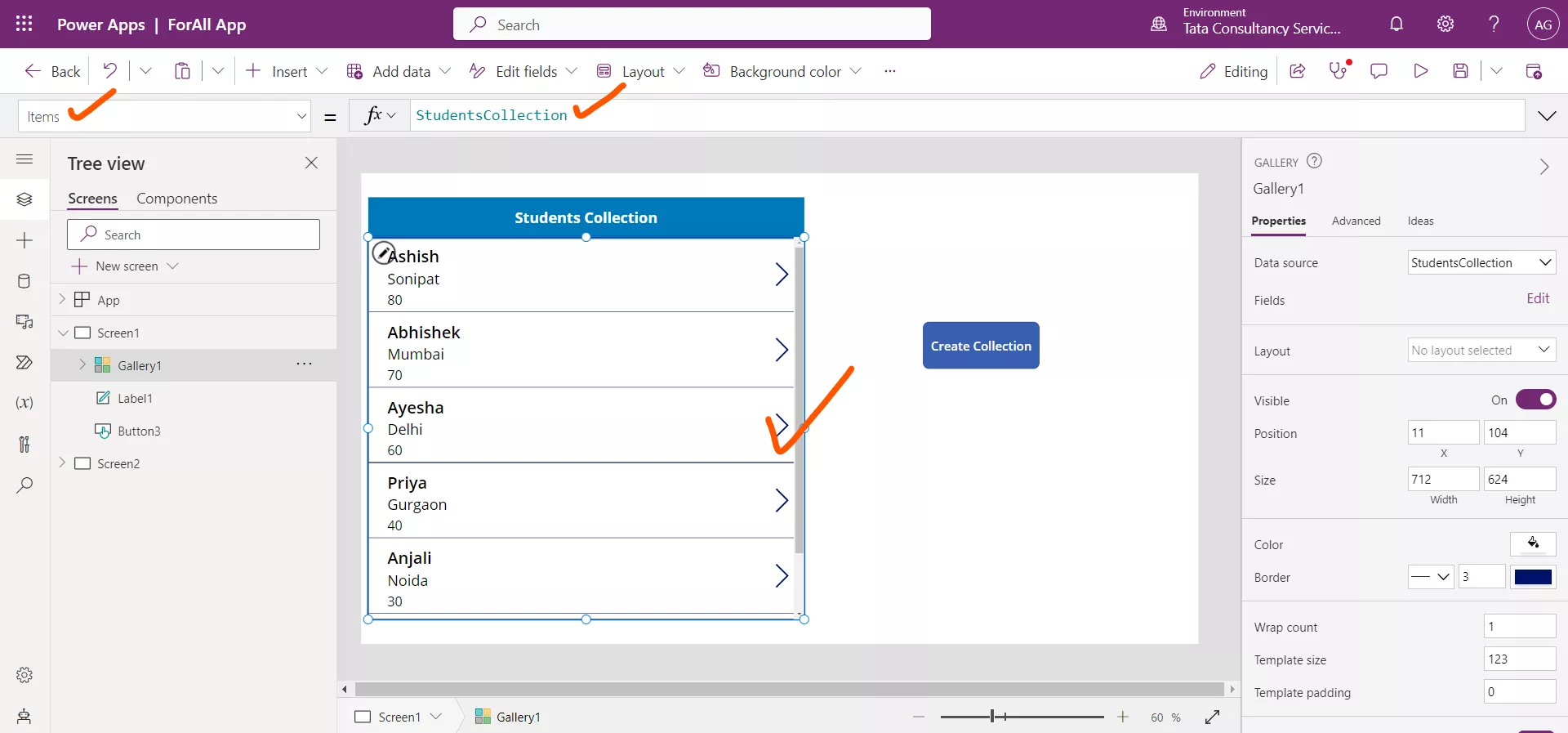
Do the necessary changes in the gallery, and it is looking like the image above. The current item in the gallery is accessed by ThisItem.ColumnName.
For example, the name of the collection is accessed by using the ThisItem.Name.
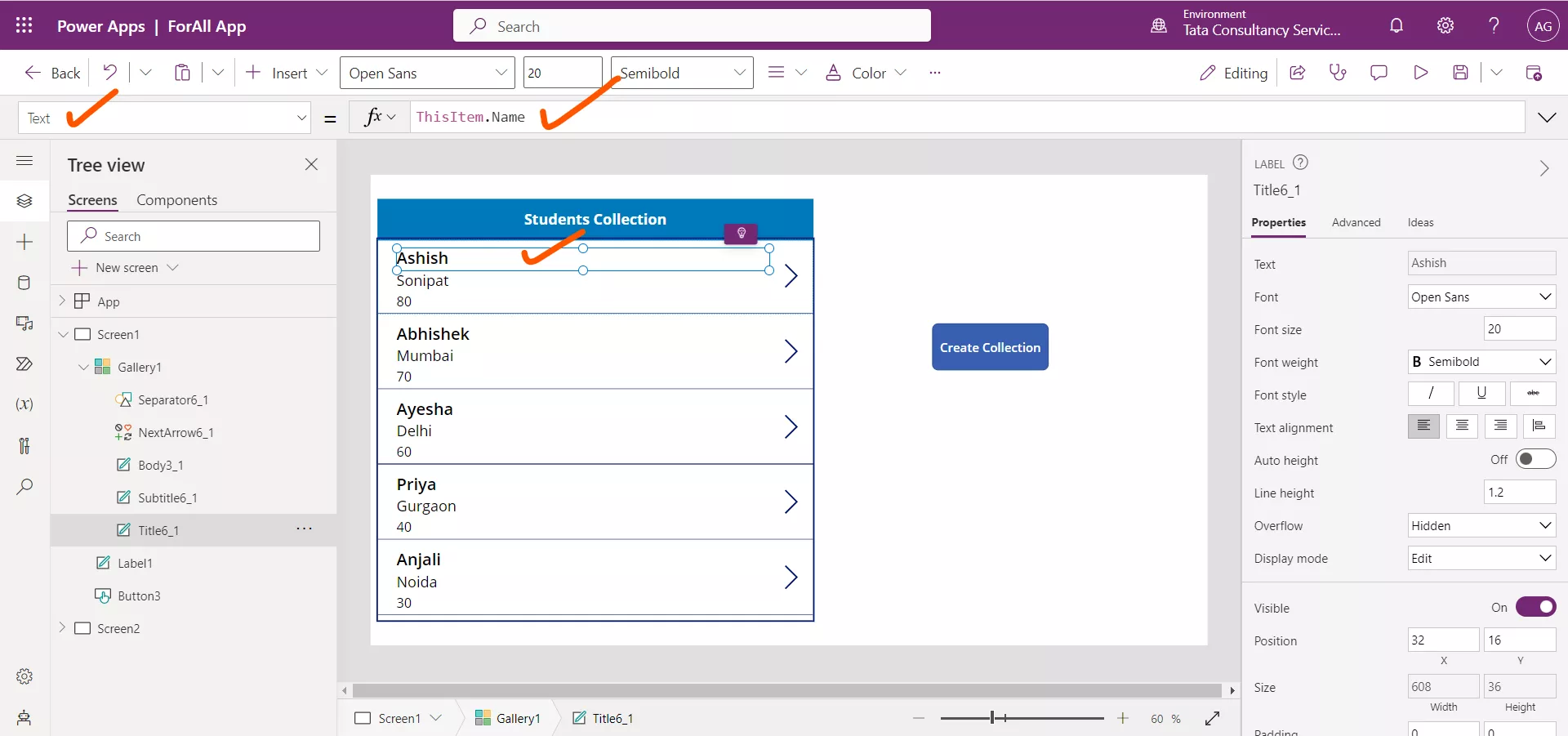
Step 4: Add another screen and add one Button control, set its Text property to "ForAll Collection" and set its OnSelect property to this formula:
Power Apps Formula
ForAll(
Gallery1.AllItems,
If(
ThisRecord.Marks > 50,
Collect(
PassStudents,
{
StudentName: Name,
StudentCity: City,
StudentMarks: Marks
}
)
)
)
The overall purpose of this code seems to be filtering out students with marks greater than 50 from the "Gallery1.AllItems" collection and collecting their names, cities, and marks into a new collection named "PassStudents".

Hold the Alt key and click on “ForAll Collection” button. This creates the collection in the power apps.
Step 5: Add one more Vertical Gallery, and choose PassStudents from the data source pop-up or set its Items property to PassStudents.
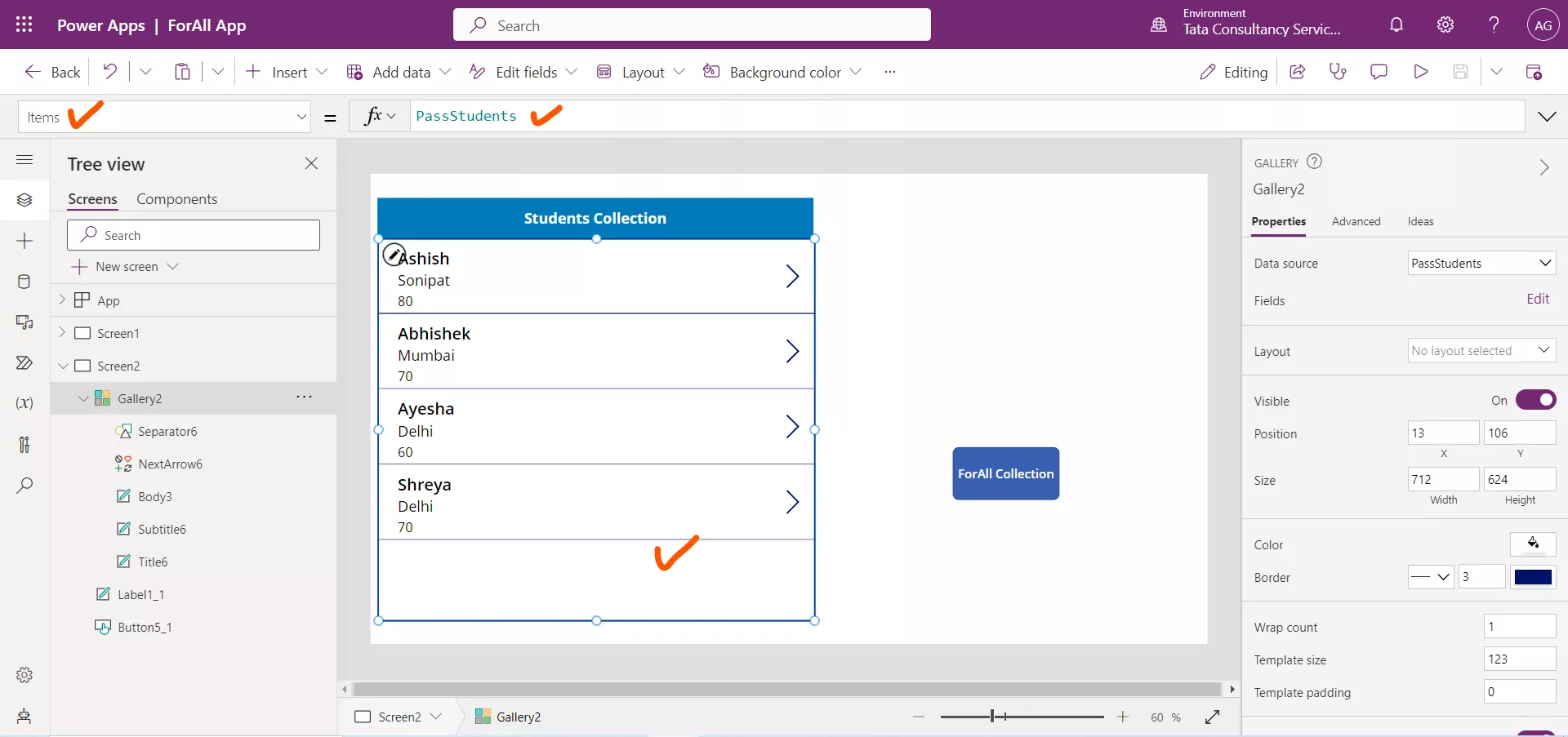
In the following image, we can see that now the collection has StudentName for Name column and StudentCity for City column and StudentMarks for Marks column.
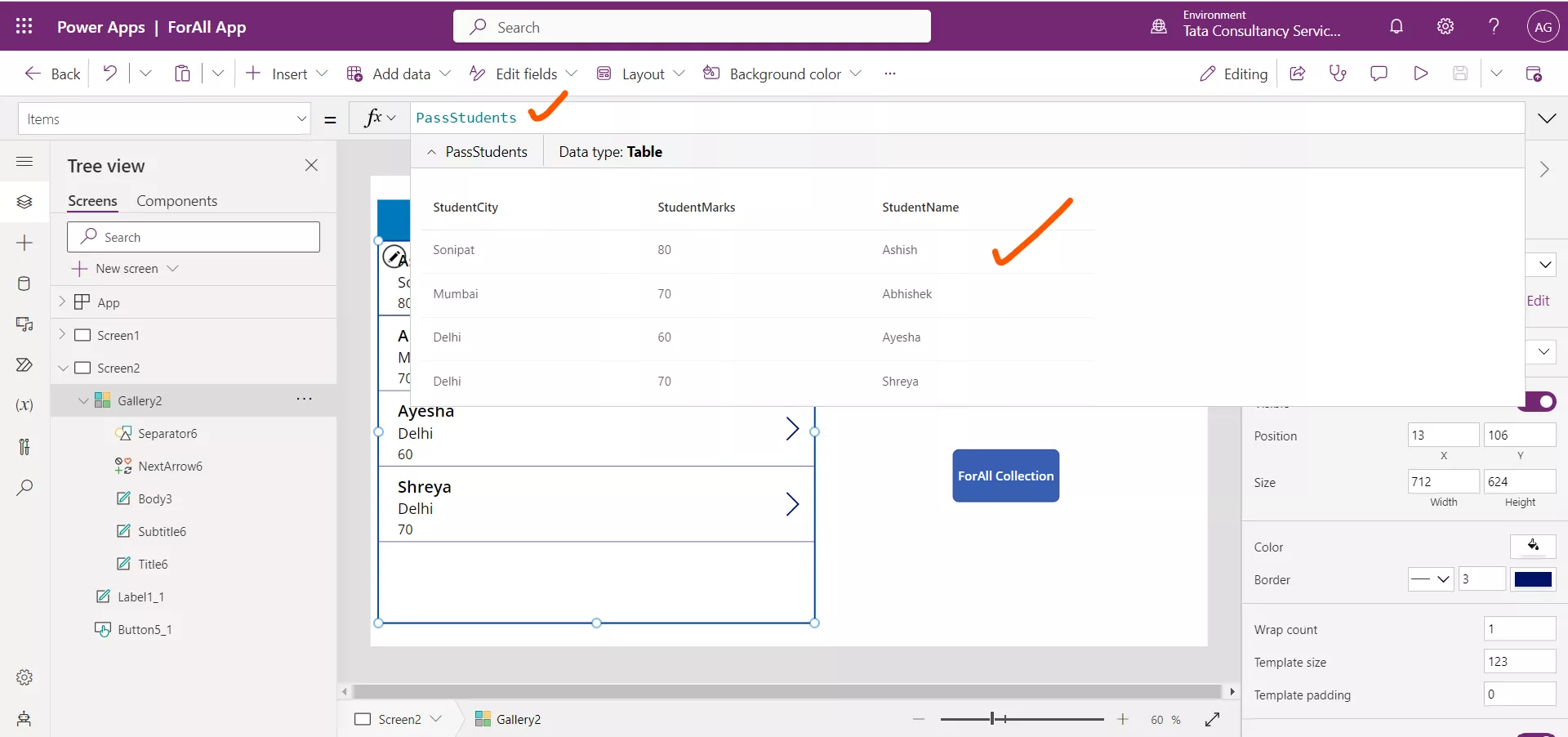
Step 6: Do the necessary changes in the gallery, and it is looking like the image above. The current item in the gallery is accessed by ThisItem.ColumnName.
We can also see that we have only records in this gallery where the Marks column value is more than 50, as stated in the formula.

B. Sharepoint as a Datasource
We can use ForAll function with the Sharepoint list as the datasource. The following is the sharepoint list named Teachers Data which we are using in the section.
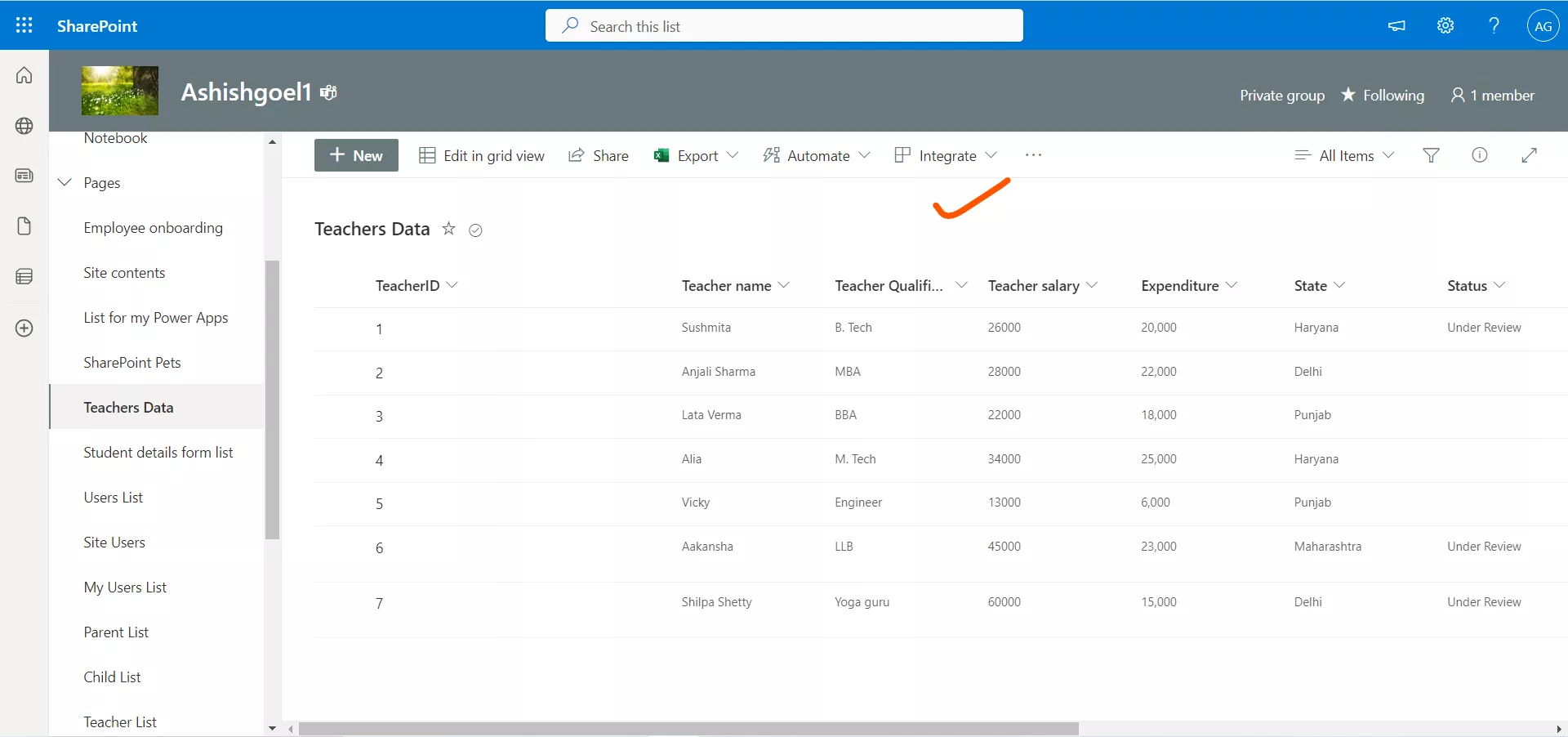
Add the Teachers Data sharepoint list in the power apps. And then add one button control and set its OnSelect property to the following power apps formula.
Power Apps Formula
ForAll(
'Teachers Data',
If(
ThisRecord.'Teacher salary' > 25000,
Collect(
Teachers,
{
Name: 'Teacher name',
Qualification: 'Teacher Qualification',
Salary: 'Teacher salary'
}
)
)
)

Add one Gallery control and set its Items property to Teachers.

We can see the Teachers table.
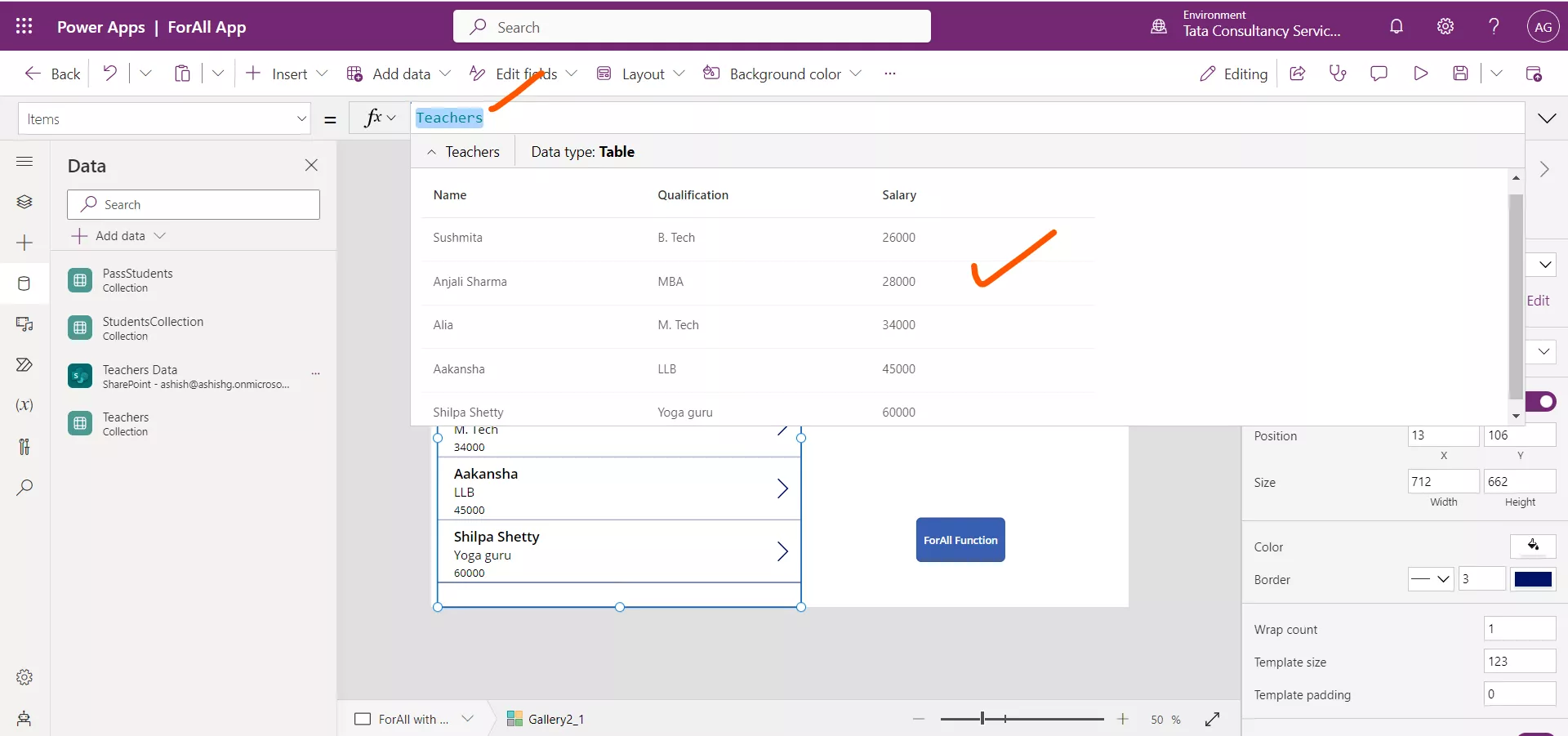
Use of Sequence Function with ForAll Function
We can use the Sequence function in Power Apps with the ForAll function to iterate the function to a specific number of times.
The Sequence function generates a single column table of sequential numbers, such as 1, 2, 3. The name of the column is Value.
For example, Sequence(5) is equivalent to [1,2,3,4,5].
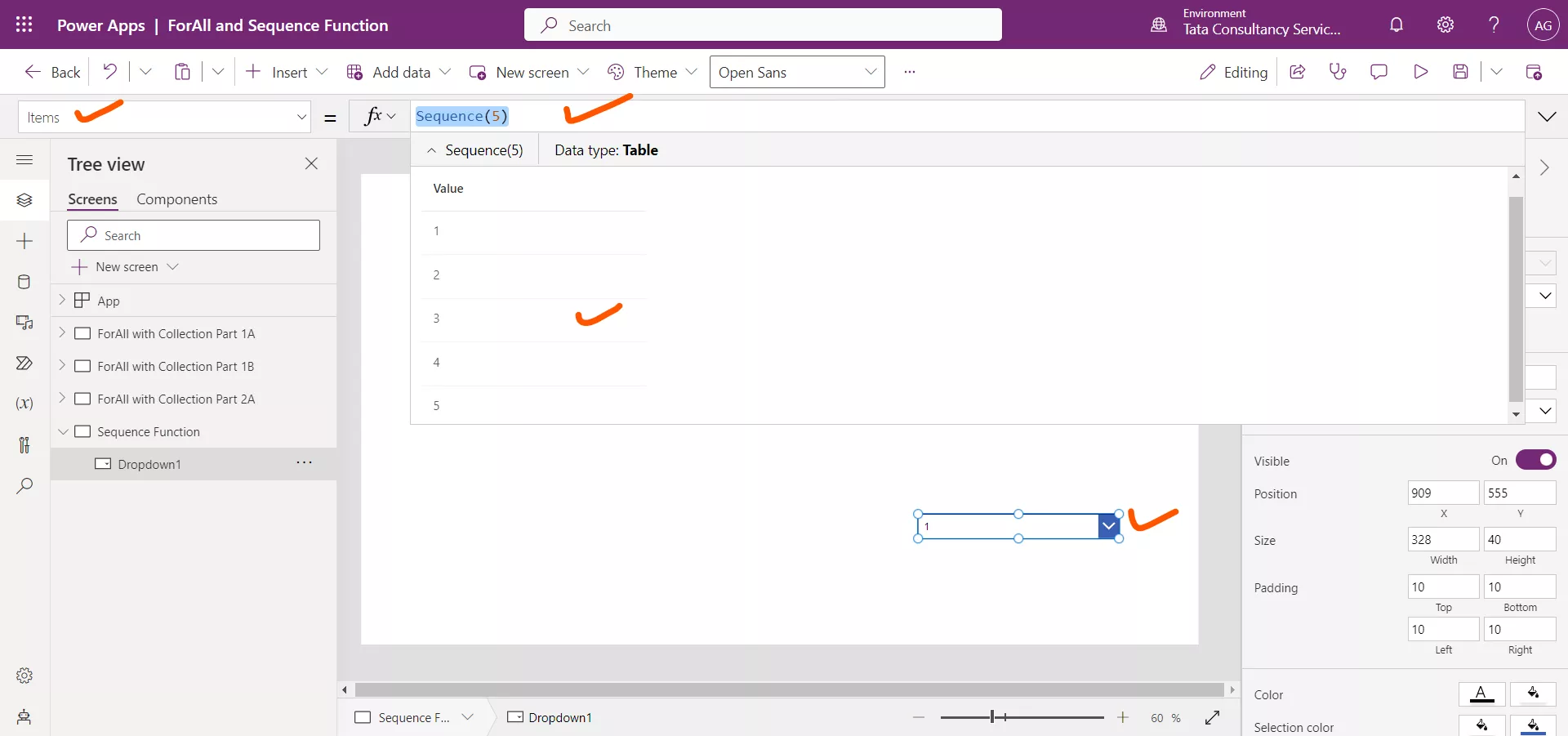
Power Apps Formula
//The above formula can be written like this
//ForAll(Sequence(5), {Result: Value})
By using the above formula, we can change the column name from Value to Result.
